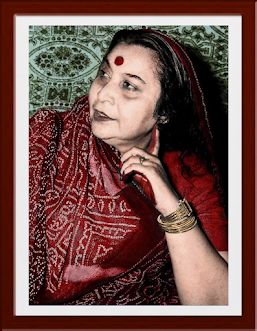Sahaja Yoga in medicine
Sahaja Yoga meditation has proven effective in addressing various medical ailments, including , and . Some of these claims have been scientifically confirmed. For example, some case studies have shown that test subjects who were practicing Sahaja Yoga meditation had "significant improvement in VCS (Visual Contrast Sensitivity)", and that meditation appeared to bring about changes in some of the electrophysiological responses studied in epileptic patients. Other studies showed that Sahaja Yoga meditation results in fewer and less acute epileptic seizures According to the Medical Observer Weekly, Sahaja Yoga was found to be more effective than other generic forms of meditation in the reduction of stress, anxiety and depressive symptoms.
Short-term effects on asthma have also been noticed, by both objective and subjective measures.
Sahaja Yoga claims that it has cured patients of "high blood pressure, asthma, epilepsy, diabetes, cancer, etc." SY's commentary on a study by Mishra [RK], et al., 1993, suggests that an observed increase in beta-endorphins for meditating males could explain "so-called miraculous cures". Mishra reported that Sahaja Yoga meditation resulted in a "significant increase" in beta-endorphins between control and meditating subjects.
The organization runs an international hospital in Mumbai, India, the Sahaja Yoga International Health and Research Centre, which uses Sahaja Yoga methods. This hospital claims to have been successful in curing incurable diseases such as (refractory) high blood pressure, epilepsy, and multiple sclerosis.
Shri Nirmala Srivastava has developed a liver diet to promote better health. White cane sugar, white rice, yogurt, ginger, fruits and vegetables promote the "cooling" of the liver. Alcohol , fried foods, red meat, fish, cream and chocolate are among the foods that are "heating" and thus may be harmful if taken in excess.
Water vibrated spiritually can, according to the organization, change the characteristics of water, reulting in purification
references -https://psychology.fandom.com/wiki/Sahaja_Yoga
- Manocha, R. "Sahaja yoga in asthma", Thorax 2003;58:825-826. URL: [2]
- ↑ 13.0 13.1 Manocha R, Marks G.B., Kenchington P., Peters D., Salome C.M. "Sahaja yoga in the management of moderate to severe asthma: a randomized controlled trial", Thorax 2003;57:110-115. URL: [3]
- ↑ Ramaratnam S., Sridharan K. "Yoga for epilepsy", Cochrane Database Syst Review 2000;(3):CD001524
- ↑ Harrison, L.J., Manocha R., Rubia, K. "Sahaja Yoga Meditation as a Family Treatment Programme for Children with Attention Deficit-Hyperactivity Disorder", Clinical Child Psychology and Psychiatry 2004;9(4):479-497. URL: [4]













